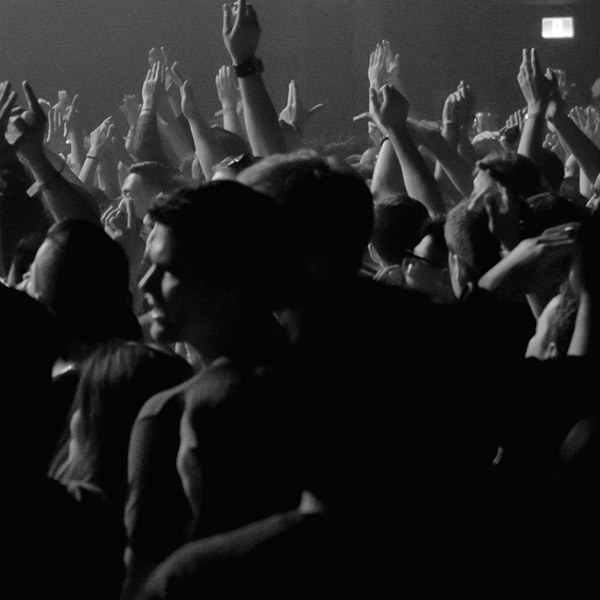‘Thing’ Documents the Early Days of Chicago House: ‘We Were in the Middle of History’
In 1986, Simone Bouyer worked a day job in Chicago at the advertising agency Ogilvy & Mather while painting in her spare time. “I was having a problem getting my art shown,” she recalls. Bouyer was Black and queer, and “there was nowhere we could look in popular culture and see our experiences reflected,” she says. “So we thought, ‘Let’s do it ourselves,'” — and launched the Holsum Roc Gallery with Stephanie Coleman.
Perhaps unexpectedly, Bouyer was soon exploring a new medium: magazines. “A lot of creative people” visited Wholesome Roc, including Robert Ford, an assistant manager at Rose Records and amateur DJ, whom Coleman describes as “a big magnet for writers and fashionistas and musicians.” When Ford subsequently started an interconnected series of zines, Bouyer and Coleman worked on one of the publications, Thing, which ran for 10 issues from 1989 to 1993.
“It was campy, Black, and gay,” Coleman says, and it ranged across the arts, culture, fashion, and activism. Reissued in March by the Brooklyn-based non-profit Primary Information — which is selling copies online — the magazine also captured the early days of house music in Chicago.
The city was a hotbed for the fledgling genre at the time. “When we weren’t doing the zine or running the gallery, we were out dancing,” Bouyer notes. By osmosis, “house culture was a big part of Thing magazine,” according to Terry Martin, who contributed photos to the publication and worked on another short-lived, house-focused publication titled Cross Fade with Ford.
“We were in the middle of this history forming around house culture — it was blowing up in Chicago at the time,” Martin continues. Ford “knew music inside and out. It is really a thread that runs through the entire series.” (His co-editors were Trent Adkins and Lawrence D. Warren.)
Even as DJs and producers created house history in real time through riveting sets and thrilling new 12-inch singles, Thing shows that debates about the essence of the genre — and its direction — were already raging. In the second issue of the magazine, the producer Riley Evans dismisses “this ‘new house’ era.”
The sound he fell in love with was full of “fifteen minute songs with constantly changing themes and motifs.” But by April 1990 — long before the creation of many songs that are thought of as house classics today — he was put off by the repetition he was hearing in new records. “Music shouldn’t just be the same thing over and over,” Evans complained.
For Evans, the work of Larry Heard, another Chicago producer, was the exception that proved the rule. “It’s what I’ve always thought real new house music should be,” Evans says. “He took it to that next phase; he gave us what it used to be.” (Heard and other Chicago stalwarts, including Derrick Carter and Mark Farina, contributed top 10 lists to Thing.)
Thing, and later Cross Fade, fought to memorialize the origins of house and resist its commodification. Along with the Evans interview, the second issue of the magazine contained a House Top 100 ranking full of 1970s disco and early 1980s boogie, singles recorded in Philadelphia (Harold Melvin and the Blue Notes’ “Bad Luck”) and New York (Unlimited Touch’s “In the Middle”). At No. 19 on Thing‘s list: Gwen McCrae’s 1981 single “Funky Sensation,” a scorching groove but one that’s far slower, around 100 beats per minute, than what’s typically thought of house music today — usually 120 b.p.m. and up.
Thing‘s top 100 emphasizes a dissonance at the core of house. Few genres have as wide a gulf between their origins — “house music culture came out of Black and gay underground clubs,” Martin says — and their mainstream conception: In the case of house, typically pounding, programmed music made largely by European dudes. (Thing was not interested in the latter.)
In a phone interview, Martin repeats a story that’s somehow both canonical yet still not as widely known as it should be: “The term ‘house music’ was coined to capture the stuff Frankie Knuckles was playing at [a Chicago club called] The Warehouse,” Martin says. “That was more eclectic than what most people would consider ‘house music’ [today].” (Coleman remembers Knuckles, a prodigious DJ as well as a gifted producer, stopping by the gallery on occasion.)
In Martin’s view, Knuckles and other DJs playing and producing around Chicago — along with like-minded contemporaries in cities like New York, Detroit, and Newark — “were changing the culture and being erased from the culture at the same time.” (When one of those New Yorkers, Louie Vega, came to DJ in Chicago in the summer of 1993, Thing reviewed his set, singling out his mix of MFSB’s “Love Is the Message,” a Philadelphia disco classic, for special praise: “Yes, we’ve heard it all before, but the way he dropped it did feel like the sky coming down.”)
Martin’s point was made explicitly in the November, 1992 issue of Cross Fade, which lamented that, “as Chicago-based labels like Trax and DJ International became relatively successful… Major-label record executives took notice and began to rampantly exploit and misuse the term in an attempt to cash in on this ‘new’ sound.”
Even as Thing grappled with weighty issues in dance music, it also cracked wise about the genre. One issue offered a multiple-choice quiz for prospective DJs: “You’re in the booth and you have to pee and get a drink. Which record is long enough?” It’s a trick question; all four of the choices are lengthy.
Funniest of all is a fake board game called “House Hayride” — sort of a club kids’ version of Monopoly. Players roll dice to move around the board while trying to avoid a series of dancefloor-clearing, night-ruining outcomes: “Whoops, you’re not on the guest list” (move back three), “Blown speaker!” (back one) and “Buy the Soul II Soul CD at $16.00, only to find that ‘Back to Life’ is not really on there!” (back three).
While the initial issues of Thing were chock full of “music and wild stories and all types of creativity,” as Bouyer puts it, Ford soon changed direction. “Once Robert discovered he had AIDS, he started to focus really on telling those stories in Thing,” she says. “It was quite brave, because nobody was doing that at the time again.”
Ford died in 1994, and his collaborators say it was impossible to imagine carrying on his zines without him. But more than two decades later, Thing started to percolate again in the art world — as the subject of an essay in Artforum, then in a 2021 exhibit at the Art Institute of Chicago, Subscribe: Artists and Alternative Magazines, 1970-1995, and at the Brooklyn Museum in Copy Machine Manifesto: Artists Who Make Zines two years later. “We thought Thing was just a one-off,” Bouyer says. “But then interest continued; people were still into the whole idea of zines.”
Thing also caught the attention of Primary Information. “As a publisher, we focus on amplifying histories that are under the surface and archival media that is vital to our contemporary lives, yet out of reach for the average person,” says James Hoff, the organization’s co-founder and executive editor. He calls publishing Thing “a no-brainer.”
Now, with the zine’s reissue, Bouyer hopes a new generation will be curious enough to dig into its history. “Other music comes and goes,” she says. “House music is still pretty exciting.”
Elias Leight
Billboard










